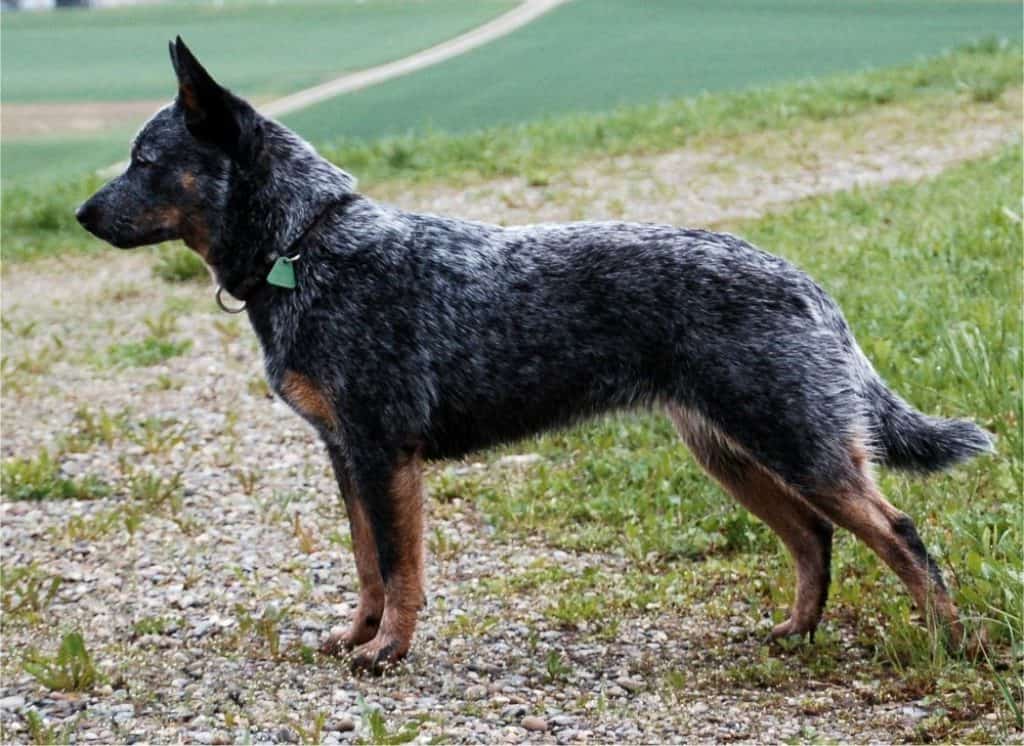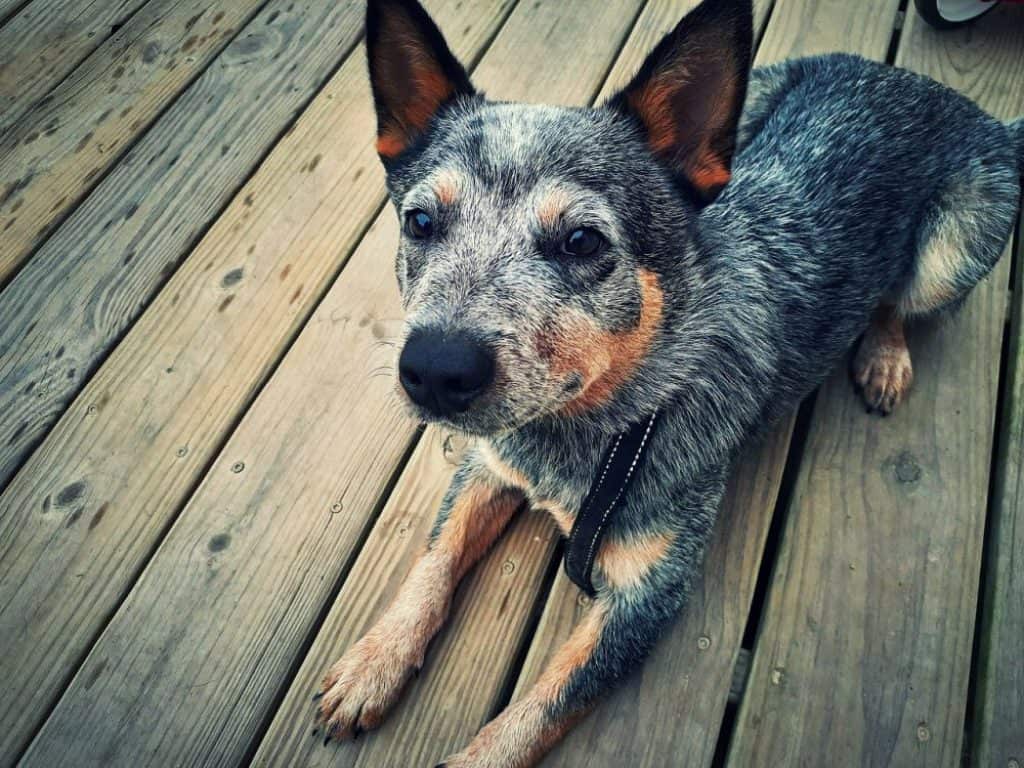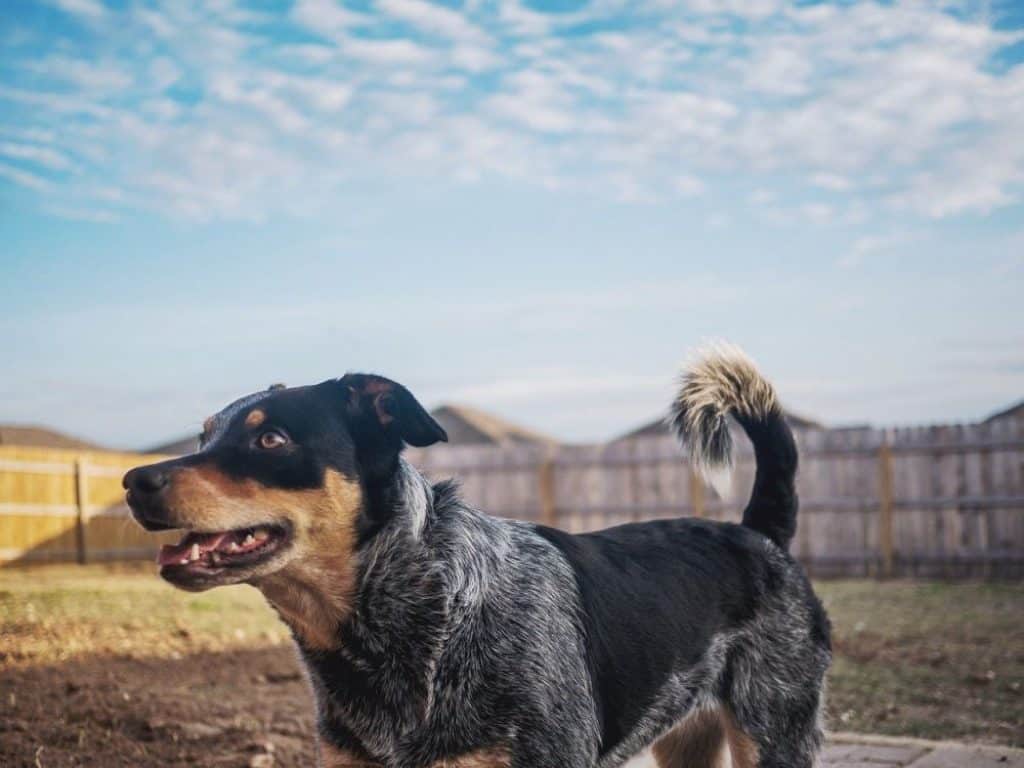Australian Cattle Dogs or Blue Heelers are among the breeds that make the most loving and faithful family pets.
Intelligent, protective, and fiercely loyal, they spend their whole life bringing joy and providing companionship to their owners.
However, the major downside of owning a dog is that the relationship is destined to end too soon.
Unfortunately, as we all know, canines live shorter than people.
Although it’s not a fun topic to think about, it’s natural to consider the life expectancy of this awesome breed before actually getting a dog.
The question of how long do Blue Heelers (Australian Cattle Dogs) live is complex and depends on many factors.
Below, I’ll try to provide some answers and explain what you can do to extend the life of your four-legged friend as much as possible.
[wpsm_toplist]
How Long do Blue Heelers (Australian Cattle Dogs) Live?

On average, Australian Cattle Dogs live between 12 and 14 years.
That puts them among the breeds with a longer life expectancy.
Generally, smaller dogs tend to live longer than large ones and Blue Heelers, being medium-sized, fall into this group.
They’re considered to be rather healthy dogs, mainly due to their origins. Bred to work and herd cattle, they developed a strong body and high tolerance to health defects.
One of the key reasons they live this long is their lifestyle. Blue Heelers are energetic, tireless, and ready to run all day.
And just like with humans, being active leads to better fitness and longer life.
Another factor in their long life span is that they’re descendants of dingo’s, Australian wild dogs, and have preserved much of their natural resilience.
Also, the fact that Blue Heelers still resemble dingo’s a lot tells us that they haven’t been a subject to much genetic tinkering in the past, which is always good for the health of the dogs.
The greatest testament to the long life span of Australian Cattle Dogs is a fun fact that the Guinness Record for the oldest dog actually belongs to this breed.
A Blue Heeler named Bluey lived to be 29 years and 5 months old!
Bluey lived with the owner Les Hall in Rochester, Australia at the start of the 20th century. Born in 1910, he spends the first 20 years of his life diligently herding cattle before he was allowed to retire.
Once retired, this amazing dog lived for almost another decade and was put to sleep in 1939.
What Health Problems Do Heelers Have?

As I said, Blue Heelers are among the healthier breeds.
However, as a breed with a rather small gene pool, Blue Heelers are prone to a couple of hereditary conditions.
It’s very likely that your dog won’t suffer any of them, but it’s still good to know the most common health issues they may be facing.
Hip Dysplasia
A condition that occurs with a number of dog breeds and is fairly common with Australian Cattle Dogs.
Dogs who suffer from hip dysplasia don’t have their thighbone and hip join fit properly. This condition can result in dogs feeling a lot of pain and cause lameness.
Later in life, hip dysplasia can lead to arthritis.
It’s recommended that the owners take their dogs while still at a young age to the vet to test them for this condition.
While hip dysplasia is commonly caused by genetics, rough physical activity and overly excessive jumping in the adolescent period can also potentially cause it.
Elbow Dysplasia
Similar to hip dysplasia, this condition affects the forelimbs of a dog.
It can cause abnormal development of the elbow and lead to a lot of pain, irregular gait, and movement problems. It’s also mainly hereditary.
If you suspect that your dog suffers from elbow dysplasia, take it to the vet for the X-ray scan and further assessment.
Progressive Retinal Atrophy (PRA)
A disease that can lead to deterioration of the retina in both eyes.
At first, your dog may lose night sight and then slowly begin to have problems with vision during the day, too.
When in a familiar and supportive environment, majority of dogs can learn to adapt to the loss of vision.
Progressive Retinal Atrophy is another hereditary disease. This means that your dog can’t have it unless it runs in his line.
To make sure that your Blue Heeler won’t inherit this condition, make sure that PRA has never run in his line.
All the more reason to always get your dog from reputable breeders.
Deafness
Like all dogs, Australian Cattle Dogs can also suffer from deafness.
With them, deafness mostly occurs as a result of inheriting the condition, rather than because of illness. It can be detected as early as in 4 weeks of age.
If you have any doubts that your dog may be suffering hearing problems, make sure to take them to the vet for testing.
How to Care for Blue Heeler?

Blue Heelers are a rather independent breed and do well on their own, but that doesn’t mean that don’t require a certain amount of care.
The better you care for your dog, it will be happier, healthier, and live longer.
Blue Heeler Diet
When it comes to feeding them, Blue Heelers aren’t too picky but there are some guidelines to follow. Puppies will need a lot of protein in their food.
They’re active from a very young age and this will help them keep going.
Also, make sure that their diet is rich in fibers, fatty acids, vitamin A and D, and calcium. Grown dogs also need a lot of protein to preserve muscle health.
Try to give them food with a low percentage of carbohydrates, a lot of Vitamin A and C, and calcium.
Blue Heeler Grooming
Regularly grooming and brushing your Australian Cattle Dog will not also make them look better, but prevent some issues such as fur loss and skin irritation.
They’re moderate to heavy shedders and require brushing once a week. Plus, try to bathe them at least once a month to get rid of the dirt and odor.
Blue Heeler Exercise
It’s also important that your Blue heeler gets a lot of exercise. They’re an extremely active and energetic breed so they’ll need daily exercise.
It’s best to provide them with a lot of space to run and stretch their legs.
They also enjoy being challenged and playing various games, so make full use of toys, ropes, frisbees, or balls.
Conclusion
In a perfect world, you would be able to spend your whole life with your dog.
However, we all know that’s impossible and sooner or later we have to say goodbye to our furry friends.
That’s why it’s so important to do everything you can to extend the time spent with them.
Knowing how long do Blue Heelers (Australian Cattle Dogs) live, you should create conditions and environment to make sure that they will spend their life happy and healthy, enjoying every second spent with you and your family.
Don’t bother yourself with information on life expectancy, but try to make every day count.




